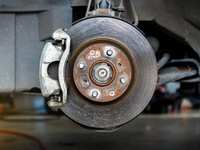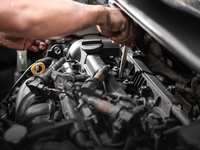- Categories :
- More
The Top 10 Rules of Road Trip Safety From Repair One

Road trips are a quintessential part of American life, offering the freedom to explore new places and create unforgettable memories. However, to ensure your journey is safe and smooth, it’s crucial to prepare your vehicle properly. At Repair One, we prioritize your safety and have compiled the top 10 rules of road trip safety to help you get ready for the open road. Whether you’re planning a weekend getaway or a cross-country adventure, following these guidelines will ensure your vehicle is road trip-ready.
Ensuring Your Vehicle is Road Trip Ready
Understanding the importance of road trip safety is the first step to a successful journey. Preparing your vehicle not only prevents breakdowns but also ensures that you and your passengers remain safe throughout the trip. A well-maintained car can handle long distances and varying road conditions, giving you peace of mind as you travel.
1. Schedule a Pre-Trip Inspection
Before embarking on your road trip, schedule a comprehensive pre-trip inspection. This crucial step helps identify any potential issues that could lead to breakdowns or accidents on the road. Our ASE-certified technicians at Repair One can thoroughly check your vehicle’s systems, including brakes, tires, fluids, and more.
Key Areas of Inspection
- Brakes: Ensure your brakes are functioning correctly, including brake pads and fluid levels.
- Tires: Check for proper inflation, tread wear, and alignment.
- Fluids: Verify levels of engine oil, coolant, brake fluid, and windshield washer fluid.
- Battery: Test the battery to ensure it’s in good condition.
2. Perform Regular Vehicle Maintenance
Routine maintenance is vital to keep your vehicle running smoothly and safely. This includes regular oil changes, tire rotations, and brake inspections. For Tesla owners, it’s important to note that tires on electric vehicles wear 30% faster than those on gas-powered cars. Therefore, we recommend tire rotation every six months.
Maintenance Checklist for Cars
- Oil Change: Replace engine oil according to your vehicle’s schedule.
- Tire Rotation: Rotate tires to promote even wear and extend their lifespan.
- Brake System: Inspect and replace brake pads and fluid as needed.
- Suspension: Check suspension components for wear and tear.
3. Pack an Emergency Kit
An emergency kit can be a lifesaver in case of unexpected situations. Essential items to include are a first-aid kit, flashlight, jumper cables, tire repair kit, and basic tools. Having these items on hand can help you handle minor issues without significant delays.
Recommended Emergency Supplies
- First-Aid Kit: Bandages, antiseptic wipes, and pain relievers.
- Flashlight: Preferably with extra batteries.
- Jumper Cables: Essential for a dead battery.
- Tire Repair Kit: Includes a spare tire, jack, and lug wrench.
4. Plan Your Route and Check Road Conditions
Planning your route in advance helps avoid getting lost and allows you to identify potential road hazards. Use GPS or map applications to check for road closures, construction, and weather conditions. Being aware of your route and any potential obstacles ensures a safer trip.
Tools for Route Planning
- GPS Systems: Provide real-time updates on traffic and road conditions.
- Weather Apps: Help monitor weather forecasts for your route.
- Map Apps: Offer detailed maps and alternative routes.
5. Stay Rested and Alert
Fatigue can significantly impair your driving abilities. Make sure to get plenty of rest before your trip and take regular breaks to stay alert. Share driving responsibilities if traveling with others to avoid fatigue.
Tips for Staying Alert
- Take Breaks: Stop every 2 hours to stretch and rest.
- Hydrate: Drink water regularly to stay hydrated.
- Alternate Drivers: Share the driving duties to prevent fatigue.
6. Adhere to Speed Limits and Traffic Laws
Following speed limits and traffic laws are crucial for road safety. Speeding increases the risk of accidents and can lead to severe consequences. Always obey traffic signs, signals, and speed limits.
Key Traffic Laws to Follow
- Speed Limits: Adhere to posted speed limits.
- Seat Belts: Ensure all passengers wear seat belts.
- Distracted Driving: Avoid using mobile phones while driving.
7. How to Handle a Flat Tire on the Road
Knowing how to fix a flat tire is a valuable skill that can save you from being stranded on the road. Here’s a step-by-step guide to help you handle this common roadside issue.
Step-by-Step Guide to Fixing a Flat Tire
- Find a Safe Location: Pull over to a safe spot away from traffic.
- Use Emergency Kit: Take out your emergency kit, which should include a spare tire, jack, and lug wrench.
- Loosen Lug Nuts: Before lifting the car, use the lug wrench to loosen the lug nuts slightly.Jack Up the Car: Place the jack under the vehicle’s frame and lift the car until the flat tire is off the ground.
- Remove Flat Tire: Finish loosening the lug nuts and remove the flat tire.
- Mount Spare Tire: Place the spare tire onto the wheel studs and hand-tighten the lug nuts.
- Lower the Car: Carefully lower the car back to the ground using the jack.
- Tighten Lug Nuts: Use the lug wrench to tighten the lug nuts in a star pattern to ensure even tightening.
8. Check Your Lights and Signals
Functional lights and signals are essential for safe driving, especially during night-time or inclement weather. Regularly inspect your headlights, taillights, brake lights, and turn signals to ensure they are working correctly.
Light Inspection Tips
- Headlights: Ensure they are bright and aligned.
- Brake Lights: Check that all brake lights illuminate when the pedal is pressed.
- Turn Signals: Verify that turn signals function properly.
9. Be Prepared for Road Hazards
Road hazards such as potholes, debris, and animals can pose significant risks. Stay vigilant and be prepared to react to these hazards. Slow down and navigate carefully to avoid damage to your vehicle.
Common Road Hazards
- Potholes: Slow down to avoid tire and suspension damage.
- Debris: Steer clear of debris on the road.
- Animals: Watch for animals, especially in rural areas.
10. Stay Connected
Keep a charged mobile phone with you in case of emergencies. Inform a family member or friend about your travel plans and check in regularly. This ensures that someone knows your whereabouts and can assist if needed.
Communication Essentials
- Mobile Phone: Fully charged with important contacts saved.
- Charger: Bring a car charger for your phone.
- Travel Itinerary: Share your route and schedule with a trusted person.
Visit or Call Repair One for Trip Preparedness in The Woodlands, TX
Ensuring your vehicle is road trip-ready can be a daunting task. At Repair One, our ASE-certified technicians are here to help. From comprehensive pre-trip inspections to regular maintenance, we have you covered.
Don’t let unexpected car troubles ruin your trip. Visit us at 6495 College Park Dr, The Woodlands, TX 77384, or call us at 936-271-1110 to schedule your service. You can also learn more about our services on our website at https://www.repaironeauto.com.















